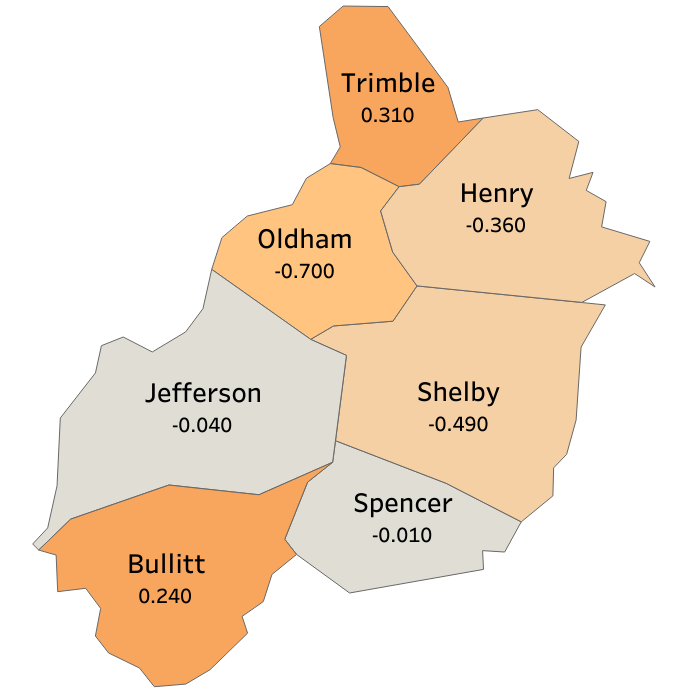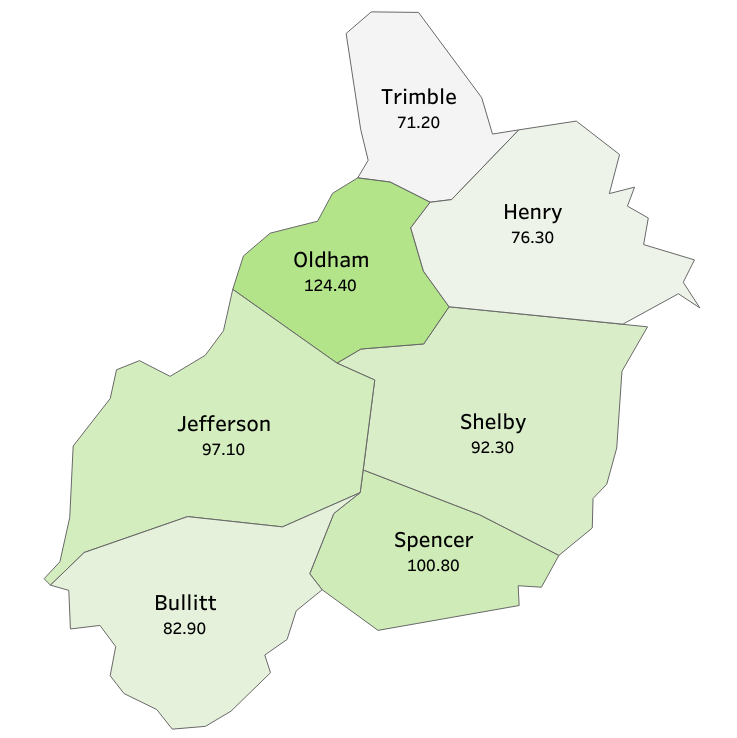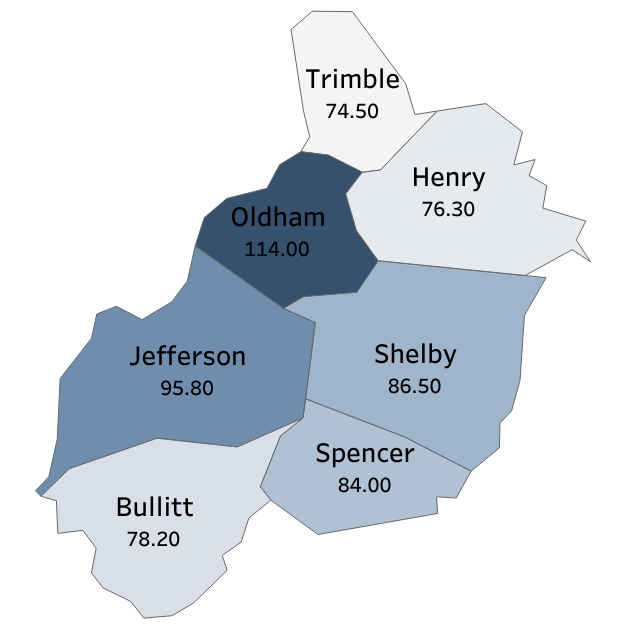Economic Distress Criteria
ECONOMIC DISTRESS CRITERIA
StatsAmerica is a service of the Indiana Business Research Center at Indiana University’s Kelley School of Business. This initiative is funded in part by the United States Commerce Department’s Economic Development Administration (EDA). StatsAmerica is a reliable portal to U.S. data and has a unique tool for gauging economic development potential called “Measuring Distress.” The Measuring Distress tool is a quick and simple way to calculate whether a county, region, or neighborhood may meet the grant thresholds for unemployment and income. The user selects a county or tract, and the tool creates regions or neighborhoods based on their choices. The report provides the 24-month average unemployment rate, the per capita money income from the Census Bureau’s American Community Survey (ACS), and per capita personal income annual data from the Bureau of Economic Analysis (BEA). The 24-month unemployment rate is found when the U.S. Bureau of Labor Statistics releases their monthly preliminary and revised unemployment data as part of the Local Area Unemployment Statistics program.
The U.S. Bureau of Labor Statistics calculates the 24-month average by taking the sum of the labor force and the sum of unemployed persons. They then divide unemployment by the labor force to achieve the rate for the period of 24 months. Explained another way, the rate of unemployment is that portion of the total labor force that is unemployed. The threshold calculations for the 24-month unemployment rates are shown in the output report and reflect the difference between the unemployment rate for the county or region selected and the U.S. figure.
The Per Capita Money Income data is collected from the American Community Survey 5-Year averages. The selected area’s per capita value is divided by the U.S. per capita income and shown as a percentage share of the U.S. figure. The Per Capita Personal Income data is collected from the U.S. Bureau of Economic Analysis. It is considered the most utilized per capita income figure. It is an estimate that includes not only cash sources of income (as the Census Bureau figure does), but also insurance, transfer payments, dividends, interest, and rent. The selected area’s per capita personal income value is divided by the U.S. per capita income and shown as a percentage of the U.S. figure.
These three sets of economic distress criteria help illustrate which counties are the most susceptible to financial hardship in the KIPDA region and may require the most federal and state funding assistance in times of emergency or instability and to help prioritize where economic investments are most needed in the region.
The table below illustrates the 24-month average unemployment, Per Capita Money Income (PCMI), and Per Capita Personal Income (PCPI) for the KIPDA region and for the U.S. and shows the corresponding threshold calculations that show how distressed our region is in these areas compared to the rest of the nation.

The table below illustrates the 24-month average unemployment, Per Capita Money Income (PCMI), and Per Capita Personal Income (PCPI) for all seven KIPDA counties in the KIPDA region and for the U.S. and shows the corresponding threshold calculations that show how distressed each county is in these areas compared to the rest of the nation.

ECONOMIC DISTRESS CRITERIA MAPS
The maps below reflect the data from the tables “KIPDA region vs. United States” and “County Comparison to U.S.”, visually demonstrating how the counties in the region compare to one another.



The 24-month unemployment thresholds for the KIPDA region show that Trimble, and Bullitt, Spencer counties have the highest unemployment rates (4.27, 4.20, 3.95). Bullitt and Trimble were above the national average. Oldham County has the lowest average of unemployment in our region at 3.26 percent.
The Per Capita Money Income table and map illustrates that Trimble County has the lowest income threshold in the KIPDA region at $26,799. Henry and Bullitt counties are not too far behind Trimble County as being the most economically distressed in this category, with Oldham once again having the least chance of being distressed with their per capita money income threshold at $46,833.
The Per Capita Personal Income threshold table and map demonstrates how Trimble and Henry counties are the most economically distressed in this category. Trimble County has the lowest with $47,815 and Henry County is not far behind at $48,943. Every one of our KIPDA counties, with the exception of Oldham County, is below the national average of $64,143 for per capita personal income. Oldham County’s is at $73,110.
Source:
1. STATSAMERICA; ECONOMIC DISTRESS TOOL – INDIANA BUSINESS RESEARCH CENTER AT INDIANA UNIVERSITY’S KELLEY SCHOOL OF BUSINESS